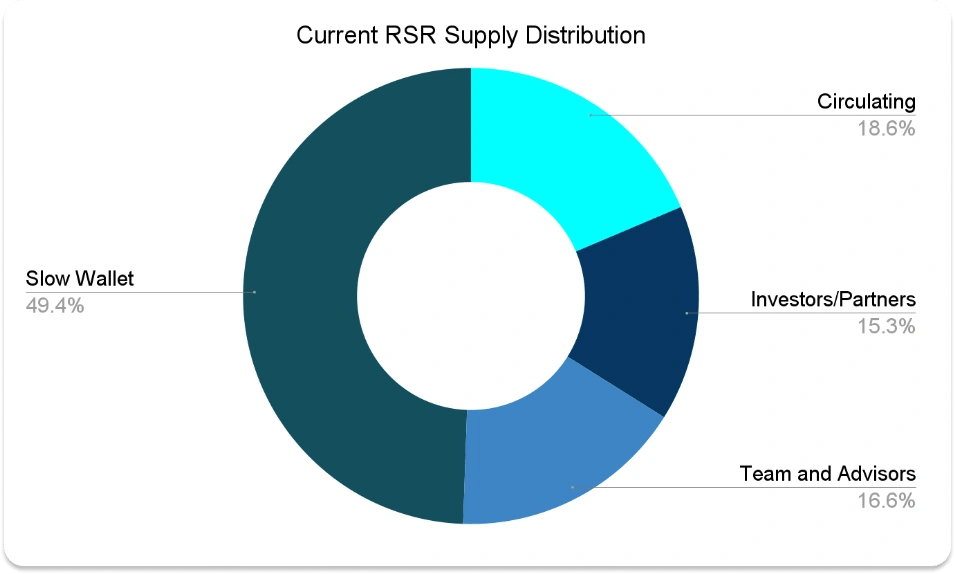Subscribe to wiki
Share wiki
Bookmark
Reserve Rights (RSR)
The Agent Tokenization Platform (ATP):Build autonomous agents with the Agent Development Kit (ADK)
Reserve Rights (RSR)
Reserve Rights (RSR) is the governance token within the Reserve Protocol ecosystem. It allows staking on any Reserve - deployed asset-backed currency (RToken) to participate in governance, earn staking fees, and contribute to over-collateralization. [1][2]
Overview
RSR functions as the governance token within the Reserve Protocol ecosystem, allowing staking on any RToken for participation in governance, earning staking revenue in exchange for providing first loss capital in case of RToken collateral depeg. [3]
Reserve Rights' (RSR) primary purpose is to provide an over-collateralization mechanism to safeguard RToken holders in the event of a collateral token default. RSR holders can stake on one or multiple RTokens or refrain from staking altogether. Stakers receive a share of the revenue from the specific RToken they stake on, with a higher total amount of yield being passed to stakers expected as the market cap of the RToken increases - thereby encouraging new stakers. When RSR is staked on an RToken, it's deposited into a dedicated staking contract, and stakers receive an ERC-20 token representing their staked RSR position, which is transferable and fungible, allowing for trading or transferring to others who may choose to un-stake it. [1]
Tokenomics
RSR has a total fixed supply of 100 billion tokens, with 50.6 billion in circulation at launch. The remaining 49.4 billion tokens are awaiting community distribution directives held in the Slow and Slower Wallets. The Slow Wallet, controlled by ABC Labs, supports RToken adoption initiatives with a hard-coded 4-week delay on withdrawal transactions. [1][2][3]
Organizational restructuring in January 2024 introduced Confusion Capital, assisting funding for the Reserve Ecosystem, including Best Friend Finance and ABC Labs. Managing the Slower Wallet, Confusion Capital imposes stricter withdrawal restrictions, maintaining the 4-week delay and limiting withdrawals to no more than 1% of the total RSR supply every four weeks. This adjustment aims to minimize reliance on Confusion Capital's trustworthiness. [1][2][3]

See something wrong?
The Agent Tokenization Platform (ATP):Build autonomous agents with the Agent Development Kit (ADK)
